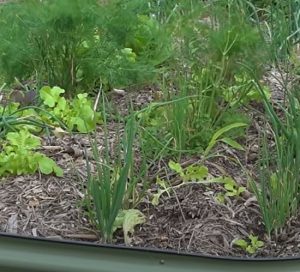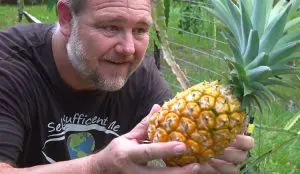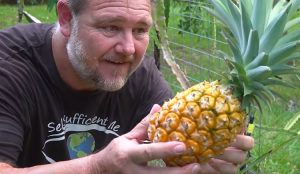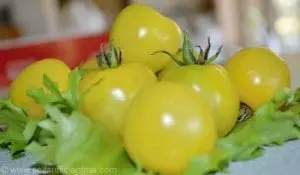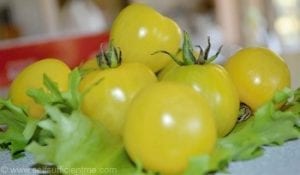The onset of spring brings an awakening to the garden- but it also brings pest activity. As fruit trees spring into action, bulbs come back to life and flowers bloom, so the insect population booms. Mid-August to early September is when we start to notice pests reappearing the garden in Queensland. You might start to see holes in leaves, curled stems, brown spots, and other tell-tale signs of infestation. If you know what to look for and inspect regularly (daily, if possible), you can keep on top of any potential problems.
Don’t take too much notice of the traditional European season timings; the humid subtropical seQld climate has a calendar all of its own. Spring is a short season in this area, and usually starts during August. Here are some of the destructive pests we commonly see in south-east Queensland home gardens around this time. Note that this list is not exhaustive, but also that you may not see all of these on your own plants.
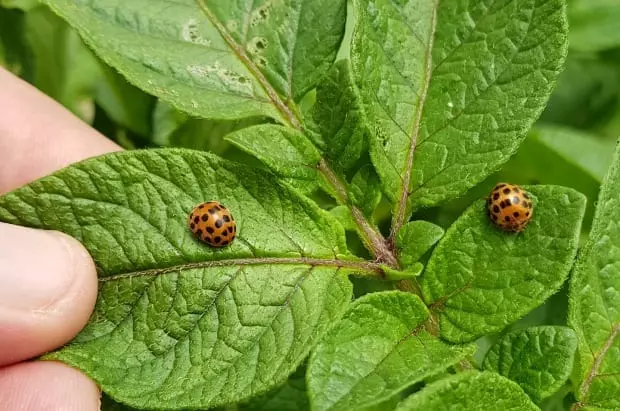
28 Spot Ladybeetle
Don’t be fooled by the name- this type of ladybeetle is a destructive baddie! So named because of the 28 black spots on their backs, this large orange ladybeetle is most commonly found munching its way through potato leaves. This pest may also attack tomatoes, eggplant, pumpkin and radishes, but potatoes seem to be their preferred food.
Adults will be clearly visible feeding on the upper sides of leaves, and their larvae will feed on their undersides. Together, they destroy the plants soft tissue, stripping layers from both sides of the leaves to leave visible holes. This in turn weakens the plant, as it reduces its ability to photosynthesize and grow.

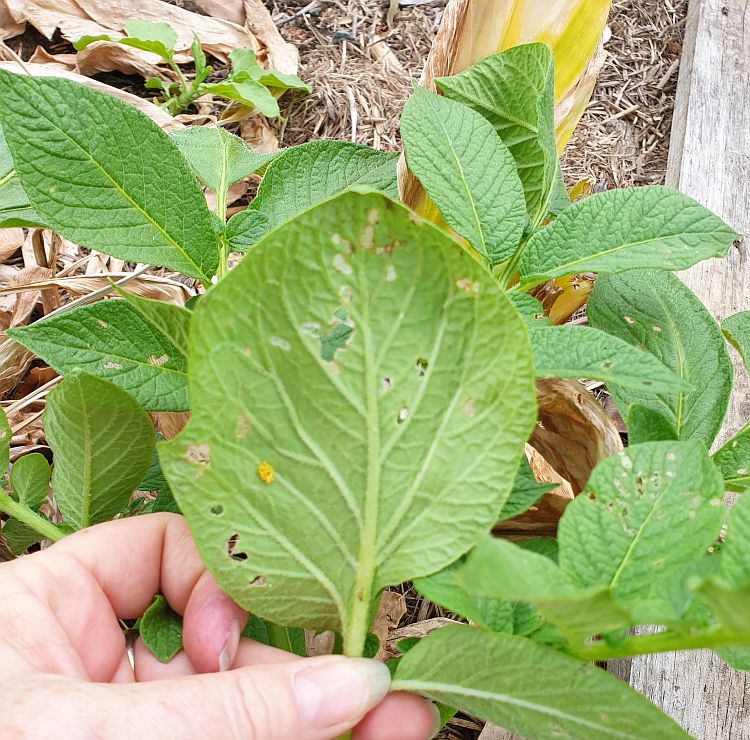


Eggs look like small yellow clusters and can be found on the undersides of leaves. The larvae are little yellow caterpillars with black spines all over them, and may appear anywhere on a plant. The best (organic, of course!) way to deal with these critters is to pick them off by hand and squish them. To find out more about the 28 spot ladybeetle, read our detailed guide here.
Cabbage White Butterfly

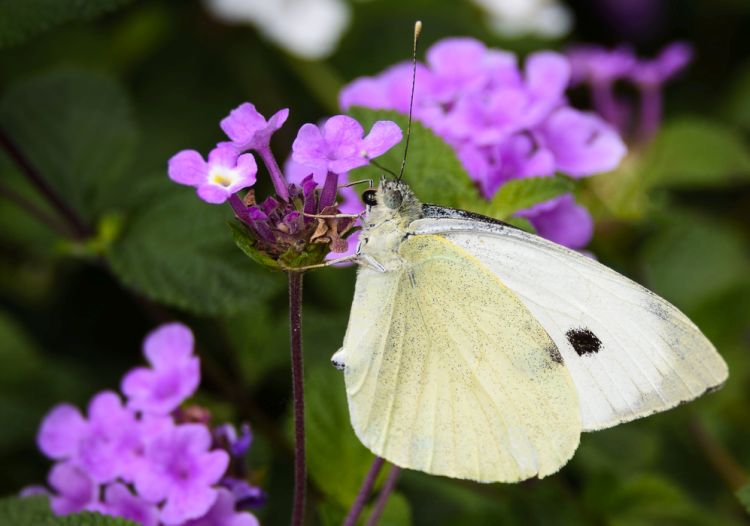
This is one of the most destructive pests in Qld home vegetable gardens. Cabbage white butterflies become active during warm weather, so will appear around August-September in seQLD. They will stay active as long as the weather is warm, which could be as long as 9 months of the year. These critters favour eating brassicas of any sort, so if you’re growing kale, mustard greens, cauliflower, broccoli, brussels sprouts or cabbage, watch out!

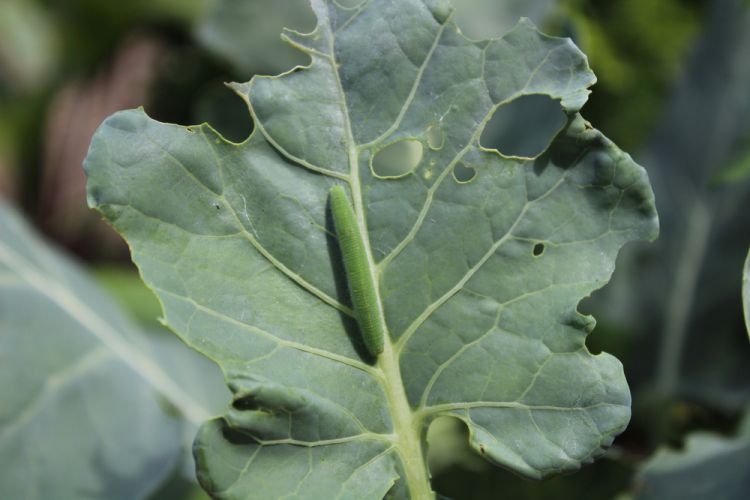

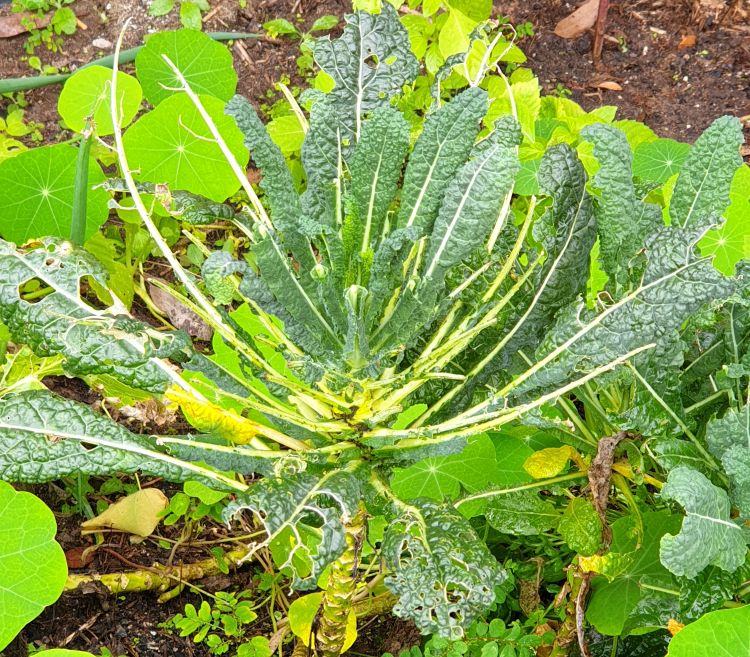
Cabbage white butterflies reproduce three times a year, and its their voracious caterpillars who cause the most damage. These caterpillars can be hard to see, as their soft bodies & pale green colour blends almost too well with their hosts. They can decimate a crop very quickly, so getting them under control as soon as you see them is important. Manual removal of the caterpillars works well, but can be time-consuming- I recommend using a blacklight (UV torch) to make finding them easier. Organic sprays and exclusion are further control options, which you can read about in detail here.

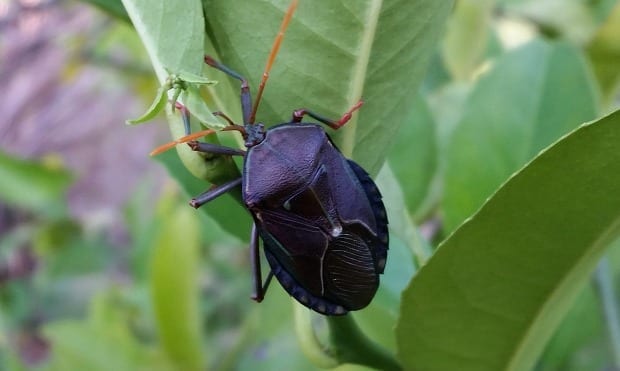
Bronze Orange Bug
Also called stink bugs, shield bugs, and orange shield bugs, the bronze orange bug is another destructive pest that appears with the onset of warm weather in August-September. This is an Australian insect that is native to coastal Qld and northern NSW. Its traditional targets include finger limes and desert limes, but it has now adapted to feed on most varieties of cultivated citrus (personally, I find they particularly love my potted blood orange tree).
Just as citrus trees are coming out of their winter dormancy and sprouting fresh new growth, bronze orange bugs appear. They directly attack this new growth, sucking the sap out of the tender leaves, soft stems and fruit, which makes it very difficult for young trees to grow and establish. Curled, distorted leaves and fruit drop are the tell-tale sign of stink bug infestation.

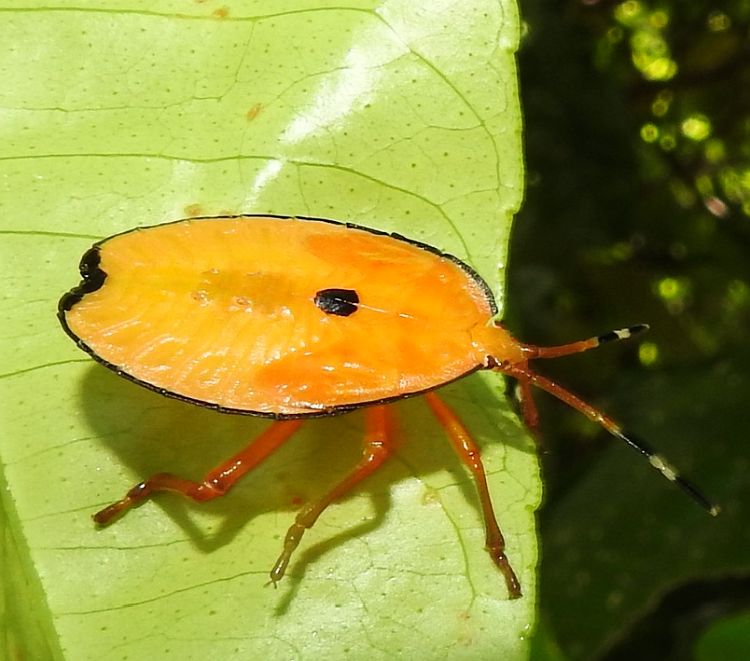
Bronze orange bugs first appear as green nymphs which are difficult to see. They then develop into bright orange bugs (see pic above) with a brown spot in the middle of their backs. The mature insect looks like the dark brown bug shown above. This pest is notorious for their chemical defence system: like many others that are grouped under the term ‘stink bugs’, they squirt out foul-smelling, citric-acid-rich liquid when threatened. This liquid can seriously hurt the skin and is dangerous if it gets into your eyes.
Manual removal is the best way of dealing with all stink bugs. Make sure to wear thick gloves and eye protection when picking them off, as their liquid can seriously hurt the skin and eyes. Squish them immediately or drown them in a jar of methylated spirits. They are most visible in the late afternoon, so I recommend doing a patrol around 5pm. To find out about more critters that attack citrus trees during spring, read our summer citrus tree care guide.

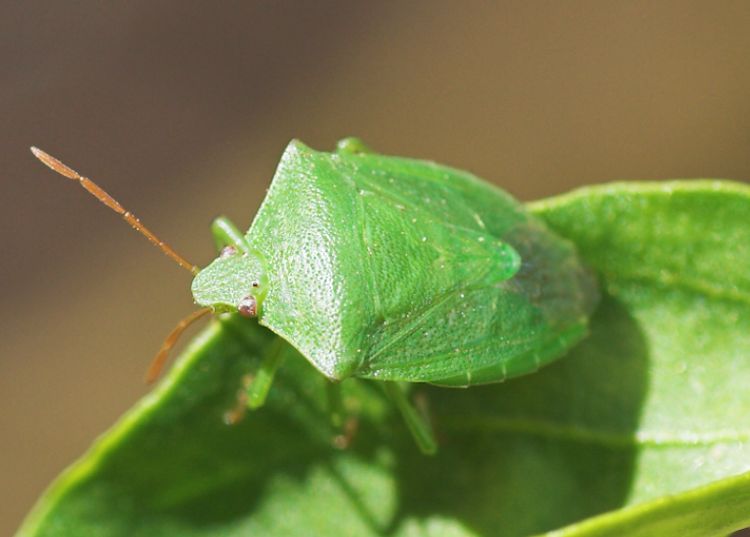
Green Vegetable Bug
The green vegetable bug, also called the green stink bug and green shield bug is another plant-feeding stink bug. It inhabits warm climates world wide and in Australia is an introduced pest, with particularly large populations in coastal Qld. Adults appear as bright green (camo colour!) shield-shaped insects during summer, and change to a pale brown during winter. Newly-hatched nymphs can be yellow, orange, brown or a combination of these colours.
This sap-sucking insect may cause devastating damage, and can be difficult to control. A particular pest of pulse crops in the commercial sphere, green vegetable bugs will eat a wide variety of fruit in the home garden (I find they ruin my tomatoes if I don’t individually bag each fruit). Feeding punctures of the green vegetable bug cause further damage. While these punctures look miniscule & non-destructive, the truth is quite opposite. In fact, these tiny skin punctures allow the entry of fungi and bacteria that cause interior rot, which spoils the entire fruit.
Green vegetable bugs are easiest to find in the middle of the day- having said that, they can be hard to see & tricky to pick off by hand as they move quickly. Pesticides are not recommended for this pest, as chemicals will also kill its natural enemies. A home-made chilli and soap spray applied is a great place to start, together with a daily inspection.

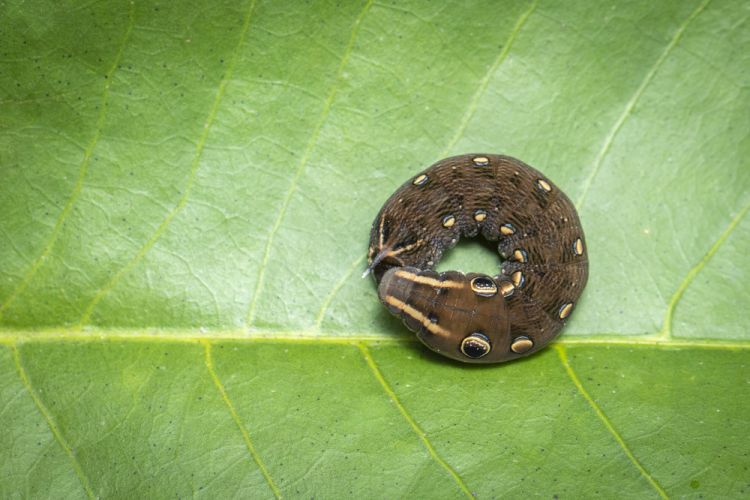
Cut Worms
Cutworms are the young caterpillars of several species of night-flying moths (such as the well known bogong moth) whose soil habitat and camouflage colours make them nearly impossible to see. The caterpillars are called cutworms because they ‘cut down’ little plants at the base of the stem, as they specifically feed on the stems which are just at or below the soil surface. In practice, this means that just when your seedlings have one or two sets of true leaves & are just getting established, they can literally disappear overnight.
Moths lay their eggs on plant material near the soil surface. The resulting caterpillars grow, feed, and pupate within the soil, completing their year-long life cycle before finally emerging as an adult moth. These nocturnal feeders will attack all types of crops, and can decimate new plantings in a matter of days.

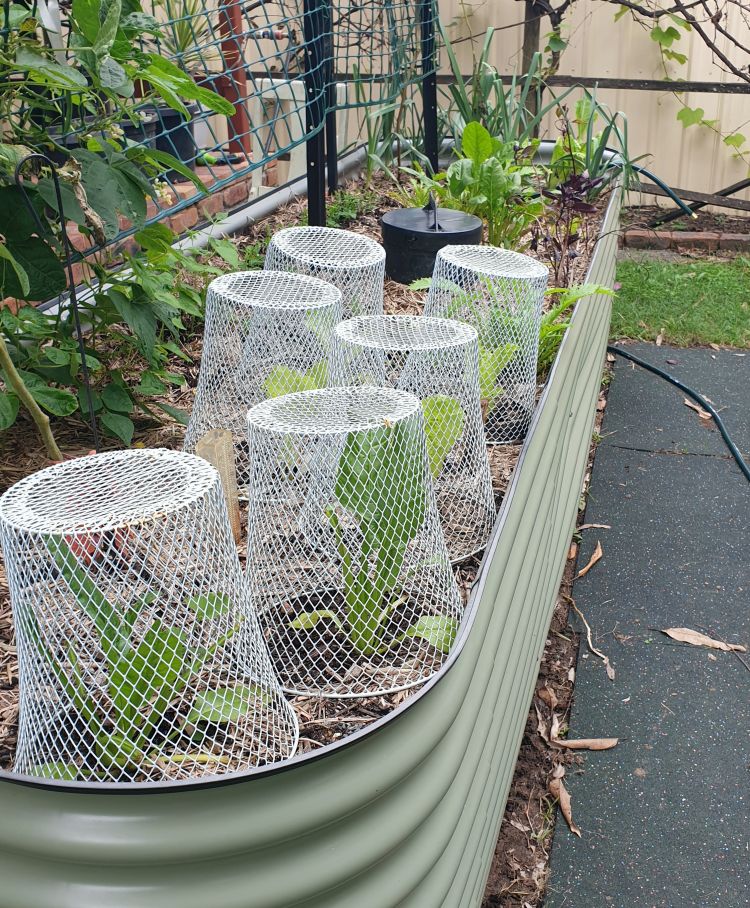
Organic controls for cutworms involve either spraying or exclusion. You can spot-spray regularly in the evening with bacillus thuringiensis (brand name Dipel), or place a cardboard collar around each seedling (toilet rolls are perfect), net the whole garden bed, or cover individual plants. I recently had some cutworm damage on carrot seedlings, and used cheap metal wastepaper baskets to cover them temporarily. The damage stopped promptly, and that little bit of extra shade helped too.

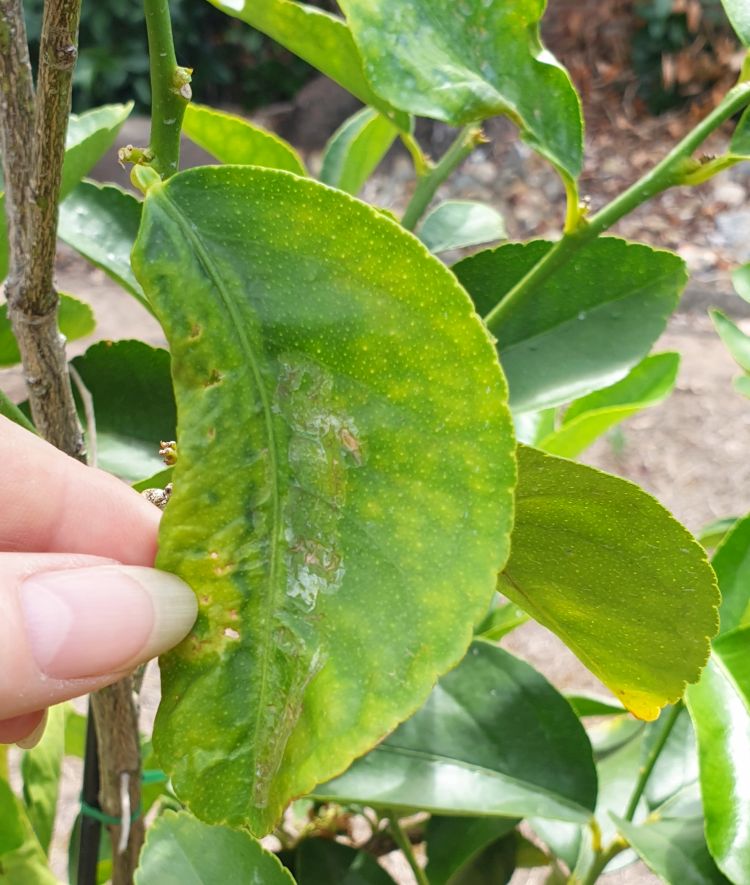
Leaf Miner
Leaf miners are tiny grey-black flies about 2 mm long, whose larvae feed on leaves. Just like bronze orange bugs, these pests appear with the onset of warm weather and feed on the fresh new growth of citrus trees. They destroy the soft healthy tissue in the middle of the leaf by tunnelling through it, leaving a curled leaf with a visible ‘snail trail’. This renders leaves unable to capture sunlight and grow effectively, leading to a weak, stunted tree.
Sadly, these larvae are basically invisible, which means that picking individual insects off by hand is not possible. Once you have leaf miner in your garden, it is practically impossible to eliminate. On the upside, if you keep it under control, they won’t kill your trees either. Exclusion and home-made remedies are the best way to combat leaf miner (even if you wanted to use them, insecticides aren’t particularly effective). A daily walk around your garden is highly recommended in spring, so you can keep a close eye on pest activity. Make sure to remove and bin (not compost) any affected leaves, consider netting trees, and spray with a home-made white oil (you can use our recipe). White oil is a mixture of soap and oil that suffocates soft-bodied insects- be aware that it can adversely affect bees too.

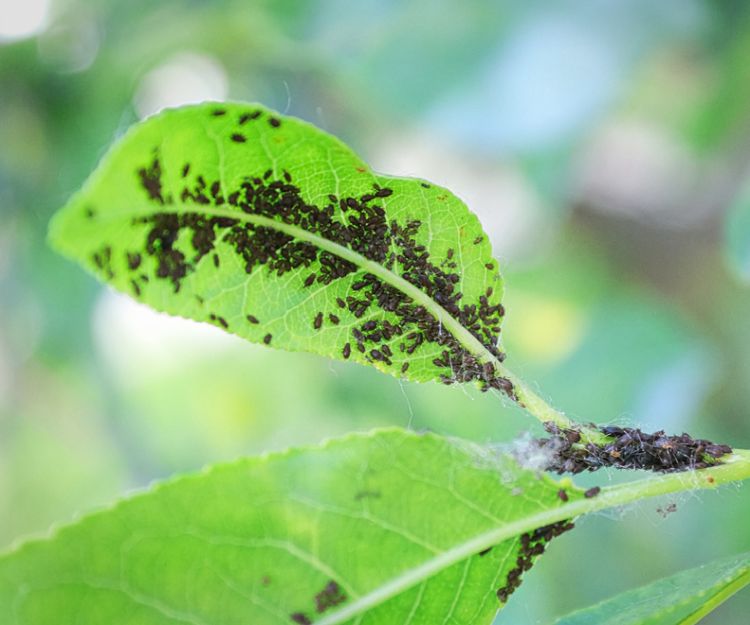
Aphids
Aphids are small sap-sucking insects that cluster densely on tender new growth and the undersides of leaves. They suck on sap, causing loss of vigour, and in some cases yellowing, stunting or distortion of plant parts. Additionally, they secrete a substance called honeydew which can cause sooty mould to develop on leaves. Sooty mould looks like black powder has been sprinkled on leaves: it doesn’t infect plants in and of itself, but causes indirect damage by preventing sunlight from reaching leaf surfaces. Without adequate sunlight, the plant’s ability to carry on photosynthesis is reduced, which in turn stunts plant growth.

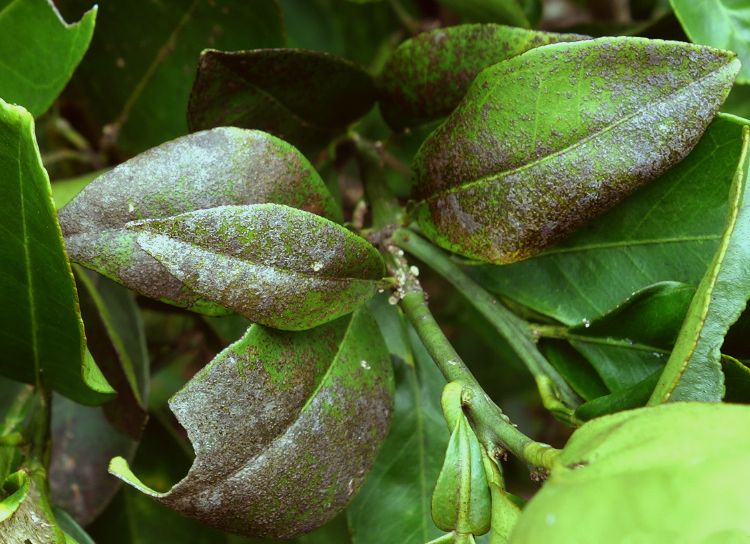
Aphids do little damage in small numbers, but they are able to reproduce rapidly & can quickly become a serious problem. They are unfussy about their food source and will attack plants from a wide variety of botanical families. Their targets might include cabbage, nasturtiums, cosmos, mustard greens, citrus trees, ornamental shrubs, beans, beetroot, lettuce, okra and tomatoes, just to name a few.
There are some 4700 species of aphids worldwide, so they can range in colour from pale green (nymphs), pink, or black to red or yellow and are very small, typically 1/16″ to 1/4″. Adult aphids are generally wingless, but winged adults will appear when there is a severe infestation. A white oil (make it at home by combining liquid soap and oil, then diluting with water) spray applied regularly is a good basic control for aphids.


